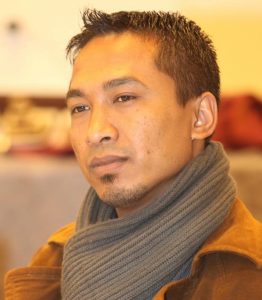Dear valued readers,
Greetings!
It gives us immense pleasure to release the fourth quarterly issue (October-December) of ELT Choutari, 2019 under the theme of ‘EFL/ESL teachers’ new teaching ideas/ methods and best practices on integrated approach to teaching English’. As the Ministry of Education, Nepal is heading towards developing and implementing integrated curriculum especially in basic grades, we felt that the discourse should be centered towards it on the academic forum like ELT Choutari. Many countries around the world have been practicing an integrated approach to teaching and learning and advocating its effectiveness for more than two decades. For instance, Dewey (1938) argued that when various subjects are taught in isolation, children lack holistic understanding of the concepts. Likewise, Brain research has depicted the connective nature of brain development that supports the view of integrated curriculum. Wesley (1992) argues that language learning is a whole brain activity; language is learned faster and better if it is taught in a holistic manner. In this backdrop, English teachers of Nepal cannot remain aloof from this new idea.
Learners always bring culture and life experiences related to different content areas to their classroom as they come from rich biological, ethnic, cultural and linguistic background. Language is learned by using it meaningfully in various contexts. Therefore, language education should not merely focus on teaching language skills in isolation but curriculum should be integrated and students, especially in basic grades, should be given ample opportunities to learn English as a second/foreign language by experiencing it in real life situations across various content.
Exchanging our teaching learning experiences on professional platform is a part of continuous professional development, which helps us to stay abreast with current trends and practices in our teaching-learning.
The 92nd issue of Choutari offers a wide range of experiences, and opinions of the contributors capturing best practices in ELT in the area of integrated approach to teaching English. We hope these articles will give some ideas, especially to English teachers, on how to integrate English language with other content areas and thus to avoid rote learning and treat English only as a subject in isolation. Moreover, these writings reflect the firsthand experiences in the area of integrated curriculum and project based learning of the authors/teachers and thus the ideas can be directly replicated to our English language teaching learning context.
There are five articles in this issue:
Ramesh Prasad Ghimire in his first article ‘Place of English in an integrated curriculum for basic grades (1-3) in Nepal’ provides a glimpse of integrated curriculum as well as relevant materials that have been developed for grades (1-3) and piloted in Nepal. In addition, the author explains where English stands in the new curriculum and finally he talks about its challenges in the part of implementation and highlights the necessity of careful and effective teacher preparation before the curriculum is launched in a large scale.
Likewise, the second article entitled ‘Enhancing project work in EFL class’ by Samira Idelcadi offers practical way of integrating project work in the EFL (English as a Foreign Language) class and some important ideas to help students in their projects, monitor and assess the projects and learning during the process. She asserts that project work enhances both students’ language skills and life skills and therefore it should not be merely taken as an extra-curricular activity and teachers could rather make it a part of their regular lesson.
In the third article ‘The market study- an integrated approach’, Prakriti Khanal shares how a long term project-‘market study’ can be the pivot around which many other themes and objectives of curriculum across the subjects can be strewn. She furthermore explains how this kind of integrated project enables students to enliven the event and develop their communication and other important life skills.
Midesh Maharjan in his reflective piece ‘Experiential learning experience in Innovative Preschool’ shares some of his innovative teaching ideas to integrate English across contents and explains how children learn language by experiencing it while being engaged in various tasks related to different subject areas.
In the last post, Choutari editor Jeevan Karki compiles you the five special photos from different areas that can be used in teaching language skills especially speaking and writing.
For ease of access, below is the list of hyperlinked articles:
- Place of English in an integrated curriculum for basic grades (1-3) in Nepal: Ramesh Prasad Ghimire
- Enhancing project work in EFL class: Samira Idelcadi
- The market study- an integrated approach: Prakriti Bhattarai
- Experiential learning experience in Innovative Preschool: Midesh Maharjan
- Photography project V: Photos for teaching speaking and writing; Jeevan Karki
Finally, I would like to thank the entire team of ELT Choutari in general and Jeevan Karki, Ashok Raj Khati, Ganesh Bastola, Praveen Kumar Yadav and Dr. Karna Rana in particular for their rigorous effort in reviewing and editing the blog pieces. We are equally indebted to all contributors of this issue.
If you enjoy reading the articles, please feel free to share in your circle, and of course, drop your comments in the boxes below. Likewise, please write your teaching-learning experiences and send us. We will give a space at Choutari. Our email is 2elt.choutari@gmail.com
Wish you a happy Chhat Festival!
Happy Reading!
References:
Dewey, J. (1938). Experience and education. New York: Touchstone.
Wesley, D.K. (1992). Educational implications of brain research applied to teaching language arts for creative and critical thinking in writing. ED345240.

